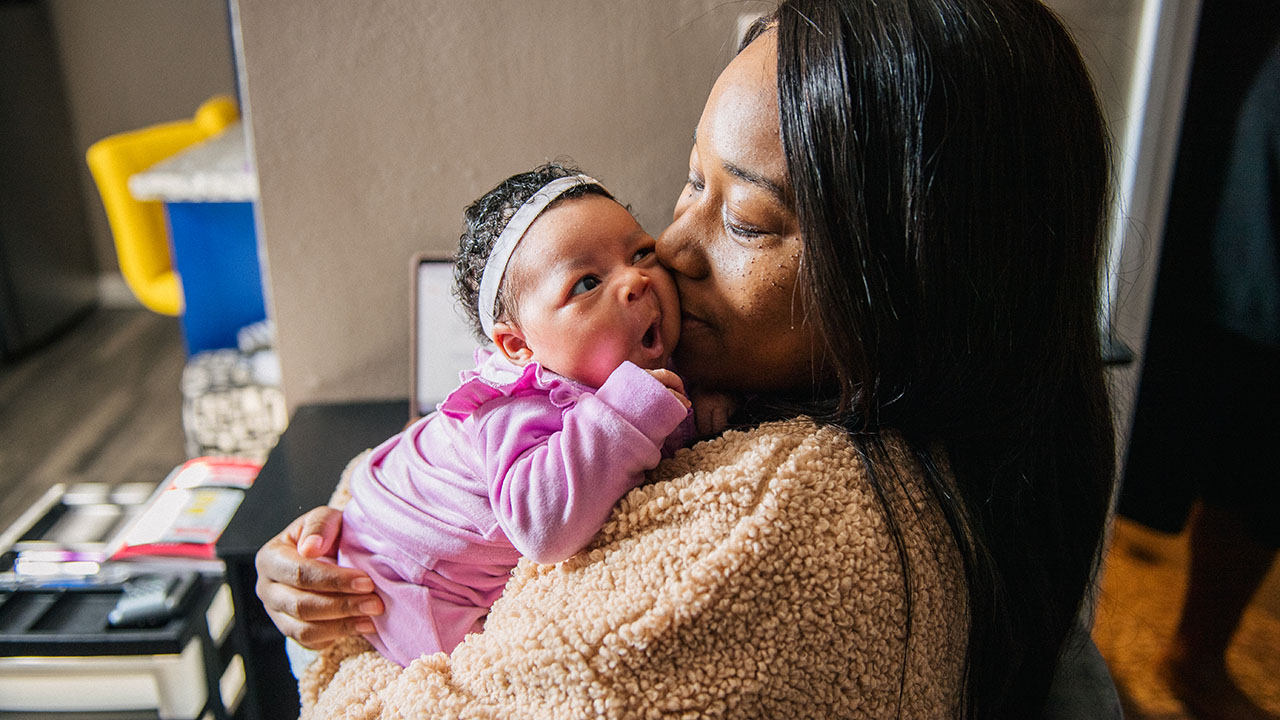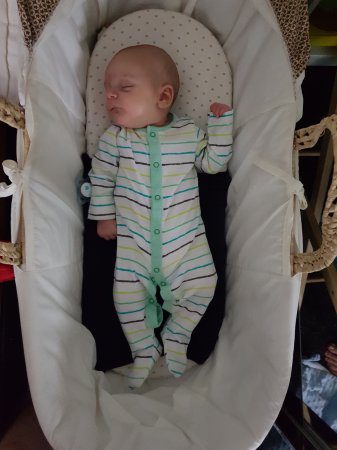How Long Does a Child Arrangement Order Last? Essential Facts
A Child Arrangement Order in the UK typically lasts until the child reaches the age of 16 or 18 in exceptional cases.
Understanding Child Arrangement Orders
A Child Arrangement Order is a legal document issued by the court that determines how a child’s time will be split between their parents or other caregivers. It sets out where the child will live, when they will spend time with each parent, and any other specific arrangements that need to be made for the child’s welfare.
Definition And Purpose Of Child Arrangement Orders
A Child Arrangement Order, also known as a CAO, is a court order that establishes the living and contact arrangements for a child if their parents are unable to agree on these matters. The purpose of a CAO is to provide stability and certainty for the child while ensuring their best interests and welfare are prioritized.
Importance Of Child Welfare And Best Interests
The welfare and best interests of the child are of paramount importance in any Child Arrangement Order. The court’s primary concern is to ensure that the child is safe, protected, and provided with a loving and stable environment. This includes considering the child’s emotional, physical, and educational needs when making decisions about their arrangements.
The court takes into account a range of factors when assessing what is in the child’s best interests, including:
- The child’s wishes and feelings (considered in light of their age and understanding)
- The child’s physical, emotional, and educational needs
- The likely effect on the child of any changes in their circumstances
- The child’s age, sex, background, and any other relevant characteristics
- Any harm that the child has suffered or is at risk of suffering
- The capability of each parent to meet the child’s needs
- The range of powers available to the court
Roles And Responsibilities Of Parents And The Court
Parents play a crucial role in the Child Arrangement Order process. They are expected to collaborate and make every effort to reach an agreement on the child’s arrangements outside of court. If an agreement cannot be reached, either parent can apply to the court for a CAO.
The court’s role is to assess the evidence presented by both parties and make a decision in the child’s best interests. This decision may specify where the child will live, how much time they will spend with each parent, and any other arrangements that are deemed necessary for the child’s welfare.
The court may also appoint a Cafcass officer (Children and Family Court Advisory and Support Service) to conduct interviews and assessments with the child, parents, and other relevant parties to gather information and make recommendations to the court.
Once a Child Arrangement Order is in place, both parents are obligated to comply with its terms. Failure to adhere to the order can result in legal consequences.
It is important to note that a Child Arrangement Order is not set in stone and can be amended or varied if circumstances change or if the child’s welfare requires it. However, any changes must be approved by the court.
Duration Of Child Arrangement Orders
A Child Arrangement Order is a legal document that sets out the arrangements for the care and living arrangements of a child. It is issued by the court and can define whom the child will live with, spend time with, and have contact with. One common concern among parents involved in child custody disputes is the duration of a Child Arrangement Order. Let’s explore the typical duration of a Child Arrangement Order and the factors that can affect its length.
Typical Duration Of A Child Arrangement Order
The typical duration of a Child Arrangement Order in the UK is until the child reaches the age of 16. However, there are exceptional cases where the order may last until the child turns 18. It is important to note that the court considers the best interests of the child when deciding the duration of the order.
Factors That Can Affect The Duration
Various factors can influence the duration of a Child Arrangement Order. These factors include:
- Age of the child: The court may review and adjust the order as the child grows older to ensure it aligns with the child’s changing needs and preferences.
- Parental cooperation: If both parents are cooperative and can effectively communicate and resolve issues related to the child’s arrangements, the order may remain in place for the specified period.
- Child’s best interests: The court always prioritizes the best interests of the child. If circumstances arise that significantly impact the child’s well-being or require a change in the custody arrangements, the court may modify or terminate the existing order.
- Parental relocation: If a parent needs to relocate due to work, personal circumstances, or other reasons, the court may review the order to ensure it accommodates the new living arrangements and visitation or contact rights.
It is essential for parents to understand that Child Arrangement Orders can be flexible and subject to modification based on changing circumstances or the child’s best interests. Consulting with a family law solicitor can provide guidance on the specific factors that may affect the duration of a Child Arrangement Order in individual cases.
Age Limits And Changes In Circumstances
A Child Arrangement Order in the UK typically lasts until the child reaches the age of sixteen, or eighteen in exceptional circumstances.
At What Age Does A Child Arrangement Order Expire?
A Child Arrangement Order typically lasts until the child reaches the age of sixteen. However, in exceptional circumstances, the order can remain in effect until the child turns eighteen. It is important to note that the court will consider the child’s best interests when determining the duration of the order.
Handling Changes In Circumstances That May Affect The Order
Child arrangement orders are designed to provide stability and consistency for the child. However, sometimes circumstances change, and adjustments may need to be made to the order. It is crucial to understand how to handle these changes to ensure the child’s well-being is protected.
Here are some considerations when handling changes in circumstances that may affect a Child Arrangement Order:
- Open communication: It is vital for parties involved in the order to maintain open lines of communication. By sharing relevant information, both parties can work together to make necessary adjustments if circumstances change.
- Seeking professional advice: If significant changes occur, such as relocation, job changes, or issues related to the child’s safety and welfare, it may be advisable to seek legal advice from a family law professional. They can guide you on the appropriate steps to take to address the changes.
- Mediation or negotiation: In some cases, it may be possible to resolve changes in circumstances through mediation or negotiation between the parties involved. This approach can help maintain amicable relationships and reach agreements that consider the child’s best interests.
- Applying for a variation order: If it becomes necessary to make significant changes to the existing order, it may be appropriate to apply for a variation order. This legal process allows for modifications to the original order when circumstances significantly impact the child’s well-being or the ability to comply with the original arrangement.
- Child’s best interests: Throughout any changes in circumstances, the child’s best interests must always remain the top priority. Courts will consider the child’s well-being and welfare when evaluating any proposed changes to the arrangement.
By proactively addressing changes in circumstances and working together, parties involved in a Child Arrangement Order can ensure the order remains in the best interest of the child.

Credit: www.pewresearch.org
Enforcing And Modifying Child Arrangement Orders
When it comes to child custody cases, the court issues a Child Arrangement Order to determine how the child’s time will be divided between the parents. But what happens if one parent fails to comply with the order? Or if there are changes in circumstances that require modifications to the existing order? In this section, we will explore the procedures for enforcing a child arrangement order and when and how to modify an order.
Procedures For Enforcing An Order
Enforcing a child arrangement order can be a complex process, but it is essential to ensure that both parents adhere to the terms set by the court. Here are the key steps involved in enforcing an order:
- Send a letter: The first step is to send a formal letter to the non-compliant parent, reminding them of the terms of the order and requesting their compliance.
- Mediation: If the letter does not resolve the issue, the next step is to seek mediation. A mediator can help facilitate communication between the parents and find a solution that works for both parties.
- Applying for enforcement: If mediation fails, the parent seeking enforcement can apply to the court for a variety of enforcement orders, such as a fine, community service, or even imprisonment in extreme cases.
- Court hearing: Once an application for enforcement is made, a court hearing will be scheduled to assess the situation. The court will consider the circumstances and may make further orders to ensure compliance.
- Enforcement by the court: If the non-compliant parent continues to ignore the court’s instructions, the court can take further steps to enforce the order, such as seizing assets or withholding driving licenses.
When And How To Modify An Order
There are situations where it becomes necessary to modify an existing child arrangement order. Changes in circumstances or the child’s needs may require adjustments to be made. Here is a guide on when and how to modify an order:
- Significant change in circumstances: Modifications to an order can be made if there is a significant change in circumstances that affects the child’s welfare or the ability of either parent to fulfill their responsibilities. This could include a change in employment, relocation, or serious health issues.
- Agreement between parents: If both parents agree on the need for modifications, they can draft a consent order and submit it to the court for approval. This streamlined process eliminates the need for a court hearing.
- Court application: If the parents cannot reach an agreement, the party seeking modifications can apply to the court for a variation of the existing order. The court will assess the situation and make a decision based on the child’s best interests.
- Mediation: Before resorting to court proceedings, it is recommended to attempt mediation to reach a mutually agreed solution. A mediator can help facilitate discussions and assist in finding a resolution that both parents can accept.
- Court hearing: If mediation fails or is not appropriate, the parent requesting modifications will need to attend a court hearing. It is crucial to provide compelling evidence of the need for changes and demonstrate how the proposed modifications will benefit the child.
Enforcing and modifying a child arrangement order can be a challenging process, but it is essential to ensure the child’s well-being and promote effective co-parenting. By understanding the procedures for enforcement and modification, parents can take the necessary steps to protect their rights and provide the best possible arrangements for their child.
Exceptions And Special Circumstances
While a Child Arrangement Order in the UK typically lasts until the child reaches the age of sixteen, or eighteen in exceptional cases, there are certain situations where the duration can be extended or other considerations need to be taken into account.
Extended Duration For Exceptional Cases
In some exceptional circumstances, a Child Arrangement Order may be extended beyond the standard age limit. This is usually done to ensure the child’s best interests are met, especially in cases where there are specific needs or circumstances that require ongoing arrangements.
Other Considerations For Child Custody Arrangements
Aside from the duration, there are various other factors that may need to be considered when determining child custody arrangements:
- Child’s wishes and feelings: The child’s desires and preferences may be taken into account, particularly if they are deemed to be capable of expressing their views.
- Child’s welfare: The child’s physical, emotional, and educational well-being are crucial factors in determining the best arrangement.
- Parental involvement: The level of involvement and capability of each parent in meeting the child’s needs is evaluated.
- Sibling relationships: If the child has siblings, maintaining their relationships may be considered when deciding on the arrangement.
- Geographical proximity: The proximity of the parents’ homes to each other and the child’s school is taken into account to ensure practicality and minimize disruption to the child’s routine.
- Changes in circumstances: If there are significant changes in the circumstances of either parent or the child, it may be necessary to review and modify the arrangement accordingly.
It is important to note that every case is unique, and the court will consider all relevant factors to determine the most suitable arrangement for the child’s best interests.
Frequently Asked Questions Of How Long Does A Child Arrangement Order Last Uk
How Long Is A Court Order Valid For Uk?
A court order in the UK can last until the child is 16 years old, or 18 years old in exceptional circumstances. It is legally binding and enforceable.
What Is The Typical Child Custody Arrangement In The Uk?
A typical child custody arrangement in the UK can vary, but there are five main types. These include sole residency, joint residency, bird’s nest parenting, flexible arrangements, and co-parenting. The length of a Child Arrangement Order is usually until the child is sixteen, or eighteen in exceptional circumstances.
Can A 12 Year Old Child Decide Which Parent To Live With Uk?
A child arrangement order in the UK typically lasts until the child is sixteen, or eighteen in exceptional cases.
How Long Does A Child Arrangement Order Last In The Uk?
A Child Arrangement Order usually lasts until the child is sixteen, or eighteen in exceptional circumstances.
Conclusion
The duration of a Child Arrangement Order in the UK can vary depending on the circumstances. Typically, a Child Arrangement Order lasts until the child reaches the age of sixteen, but it can be extended until the age of eighteen in exceptional cases.
It is essential to understand the specifics of the order and seek legal advice if any modifications or enforcement are required. Remember, the best interests of the child should always be the utmost priority when determining the length of a Child Arrangement Order.








